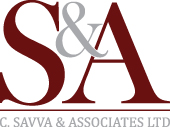Top Stories
AUDIT UPDATE: NEW DISCLOSURE REQUIREMENTS UNDER IFRS 13

International Financial Reporting Standard 13 (IFRS 13) “Fair Value Measurement” is effective for annual periods commencing on or after 1 January 2013.
The International Accounting Standards Board (IASB) has significantly expanded the disclosure requirements for fair value measurements to enable the users of financial statements to understand the valuation techniques and inputs used to determine fair value measurements. Fair value is defined by IFRS 13 as “the price that would be received to sell an asset or paid to transfer a liability in an orderly transaction between market participants at the measurement date”. IFRS 13 indicates that an entity must determine the following to arrive at an appropriate measure of fair value:
- The assets or liability being measured;
- The principal market in which an orderly transaction would take place;
- For a non-financial asset, the highest and best use of the asset.

The fair value of a non-financial asset is measured on the basis of the highest and best use of the asset by a market participant. In determining the highest and best use an entity must contemplate whether the use of the asset is “physically possible, legally permissible and financially feasible”. Usually, the current use of a non-financial asset by an entity is considered to be its highest and best use, unless the market or other factors suggest otherwise.
When transactions are directly observable in a market, the determination of fair value can be relatively straightforward, but when they are not, a valuation technique may be required to be used. IFRS 13 describes three valuation techniques an entity may use to determine fair value:
- The market approach – prices or other relevant information generated by market transactions involving identical or comparable assets/liabilities.
- The income approach – future amounts are converted to a single current amount (e.g. discounted future cash flows).
- The replacement cost approach – the value required to replace the asset/liability at the time of measurement.
Depending on the specific facts and circumstances, an entity may decide to use more than one valuation technique; however, a fair value measurement should in any case maximize the use of observable market inputs.
The majority of the requirements of IFRS 13 are largely consistent with current market valuation practices. The management is required to be aware of the conceptual differences between IFRS 13 and International Valuation Standards (IVS) to ensure any values used for financial reporting that are obtained from asset/liability appraisals, whether external or internal, are consistent with the objective of the fair value measurement in accordance with IFRS 13.
The IFRS 13 disclosure requirements relate mainly to the following three-level hierarchy on the basis of the inputs to the valuation techniques:
- Level 1 inputs are fully observable (e.g. unadjusted quoted prices in an active market)
- Level 2 inputs are those other than quoted prices in Level 1 that are directly or indirectly observable
- Level 3 inputs are unobservable
Disclosures based on the above hierarchy are already required for financial instruments under IFRS 7, but IFRS 13 extends them to cover all assets and liabilities within its scope. Some disclosure requirements differ depending on whether the fair value calculation is performed on a recurring or non-recurring basis.
The major disclosure requirements are:
- The fair value at the reporting date
- The reasons for measurement at fair value
- The level in the three-level fair value hierarchy
- The amounts and the reasons for any transfers between the three levels during the period
- A description of the valuation technique used (applicable to Level 2 and 3)
- A reconciliation between the disclosure of classes of assets and liabilities by fair value hierarchy and the line items presented in the statement of financial position.
The challenge for almost all entities is to provide in the financial statements the enhanced disclosures required by IFRS 13. Management will need to determine which (if any) of the valuation techniques used will have to change as a result of the introduction of IFRS 13 and what additional disclosures are necessary.

-
Business4 days ago
Mike Bahun and Fundraising University Make a Lasting Impact on Sports Programs Nationwide
-
Investing4 days ago
Forex Market Trends to Watch Out For in 2024
-
Business4 days ago
Karns & Karns Expands Texas Presence with New Austin Headquarters
-
Banking3 days ago
Open Banking and Cross-Border Payments: Advancements and Challenges







